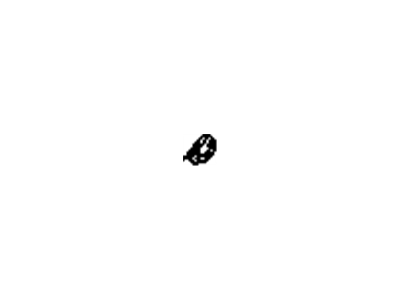
My Garage
My Account
Cart
Genuine Pontiac Fiero Radiator
Cooling Radiator- Select Vehicle by Model
- Select Vehicle by VIN
Select Vehicle by Model
orMake
Model
Year
Select Vehicle by VIN
For the most accurate results, select vehicle by your VIN (Vehicle Identification Number).
1 Radiator found
Pontiac Fiero Radiator
Pontiac Fiero Radiator is an automotive part that helps in regulating heat build-up for the engine system within the car. As an example, the radiator serves a heat exchanger which cools the engine coolant and at the same time warms the surrounding air through fins and tubes. Some of the common build of the Pontiac Fiero Radiators include aluminum cores and the body being either plastic or aluminum but there are also copper/brass Pontiac Fiero Radiators. The radiator is located at the front of the car; this makes it possible to have air forced through the grille to enhance heat transfer. performance radiators are an improvement of those from the factory as they use lightweight aluminum and superior design to improve on the cooling process. They have larger tubes and more fins to enhance the coolant circulation and the radiators' surface so as to enhance convective heat transfer rate. Some of them are designed to fit directly, and they are easy to install, while others are universal which are designed to fit any style of the car. On average, Pontiac Fiero Radiators are vital parts that should not be overlooked as they help in avoiding cases of overheating of the car engines.
Each OEM Pontiac Fiero Radiator we offer is competitively priced and comes with the assurance of the manufacturer's warranty for the part. Furthermore, we guarantee the speedy delivery of your orders right to your doorstep. Our hassle-free return policy is also in place for your peace of mind.
Pontiac Fiero Radiator Parts Questions & Experts Answers
- Q: How to remove the radiator on Pontiac Fiero?A:To remove the radiator, start by disconnecting the negative cable from the battery. Then, drain the cooling system by opening the petcock at the bottom right corner of the radiator and the drain bolts in the coolant pipes. Scribe alignment marks on the front compartment lid along the edges of the hinge brackets, remove the hinge bracket bolts, and remove the lid. Disconnect the overflow hose at the filler neck, remove the coolant recovery tank bolts, and remove the coolant recovery tank. Remove the fan frame assembly and loosen the radiator inlet and outlet hose clamps to disconnect the hoses. On automatic transaxle equipped models, disconnect and plug the transmission cooler lines. Remove the bolts attaching the radiator to the radiator support brackets. Snip off the heads of the plastic pop fasteners that anchor the air shroud to the top of the radiator. Grasp the radiator by the side tanks and carefully lift it from the engine compartment. To inspect and service the radiator, carefully examine it for leaks and damage. Brush accumulations of insects and leaves from the cooling fins. Inspect the radiator hoses and replace them if cracked or deteriorated. Flush the radiator and replace the radiator cap with a new one of the same rating. If installing a new radiator, transfer the fittings from the old unit to the new one. Lower the radiator into position, ensuring it is properly located on the lower mounting pads. Install the bolts attaching the radiator to the radiator support brackets and tighten them. Install the transaxle oil cooler lines, if equipped. Reattach the coolant hoses to the radiator fittings and tighten the hose clamps securely. Place the fan frame assembly in position, install the fan assembly mounting bolts, and tighten them securely. Reconnect the fan motor electrical connector. Place the coolant recovery tank in position and tighten the mounting bolts securely. Reconnect the overflow hose to the filler neck using a new clamp if necessary. Finally, fill the cooling system with coolant.









